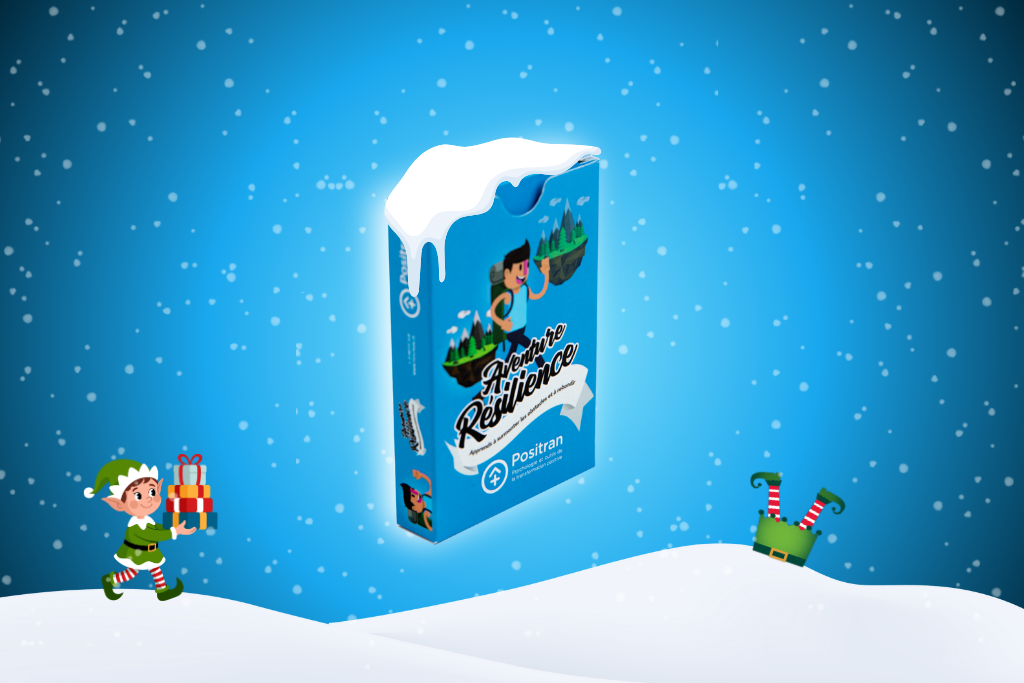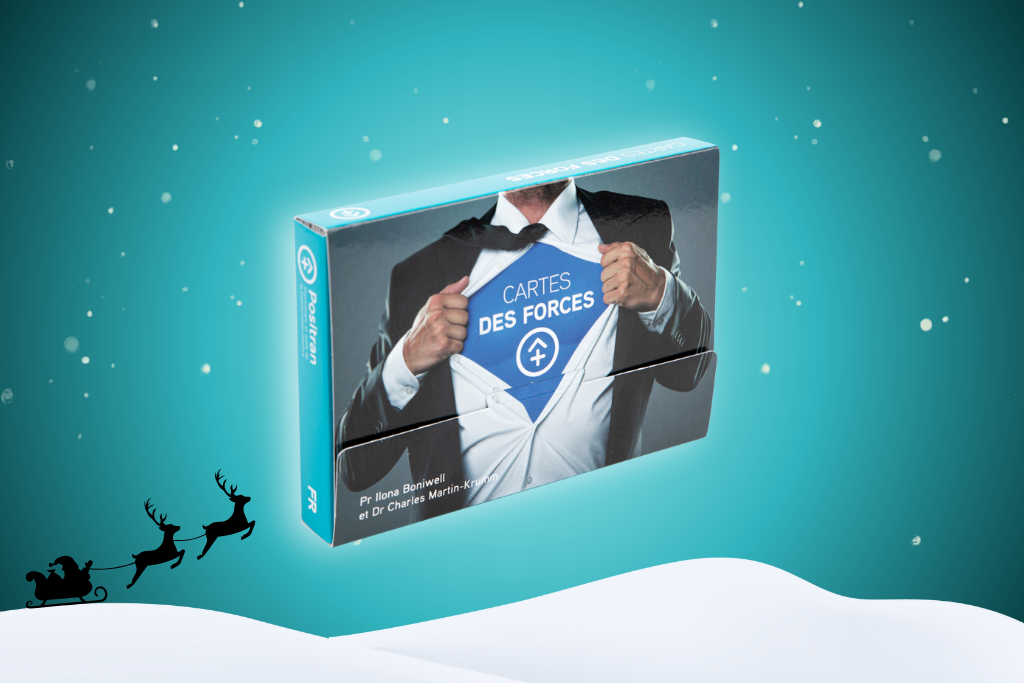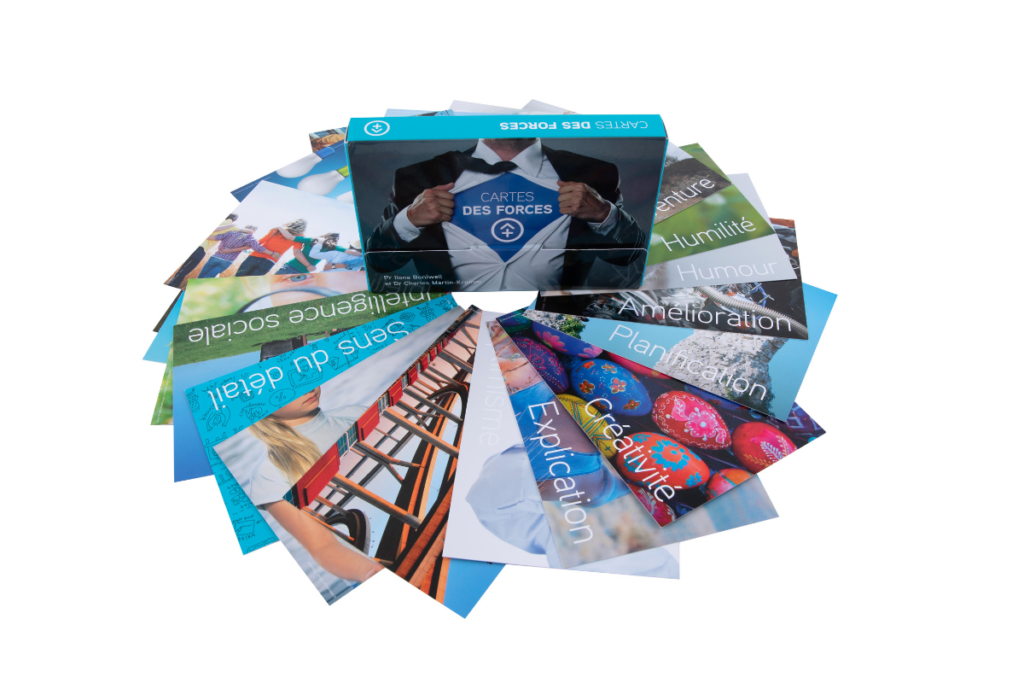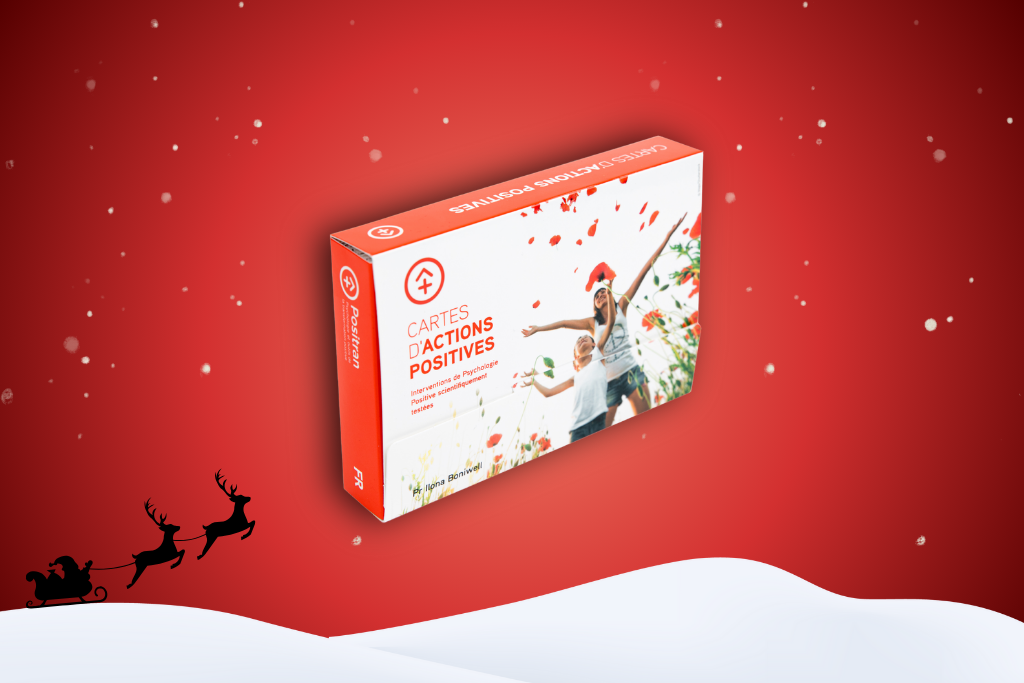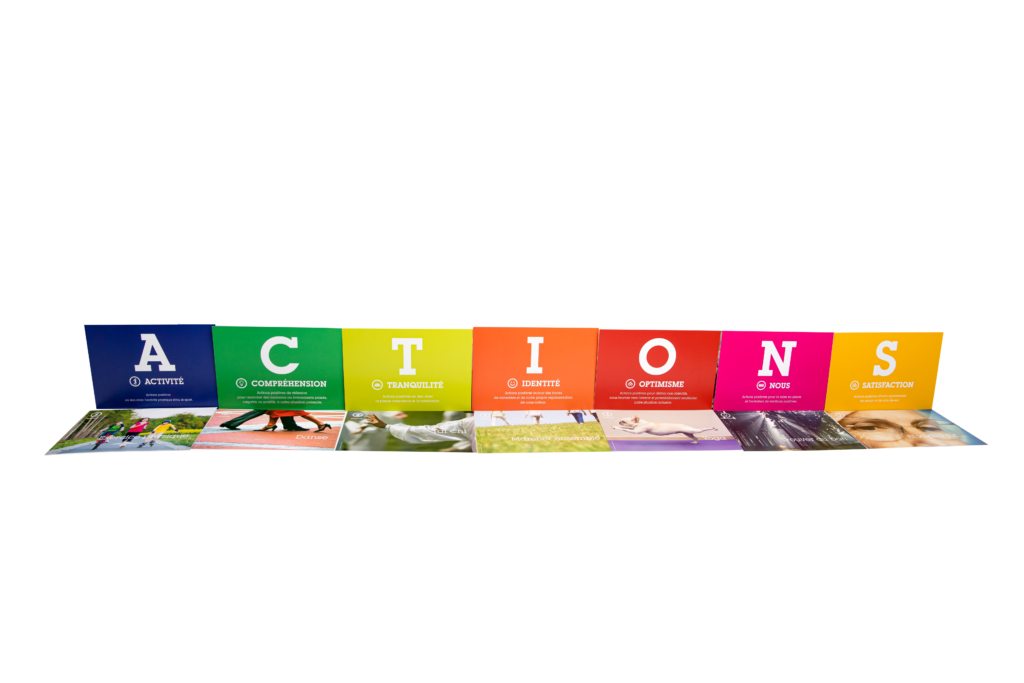It can be used both as a guide to help you understand and design interventions, and as an interactive game to encourage reflection on engagement and well-being at work.
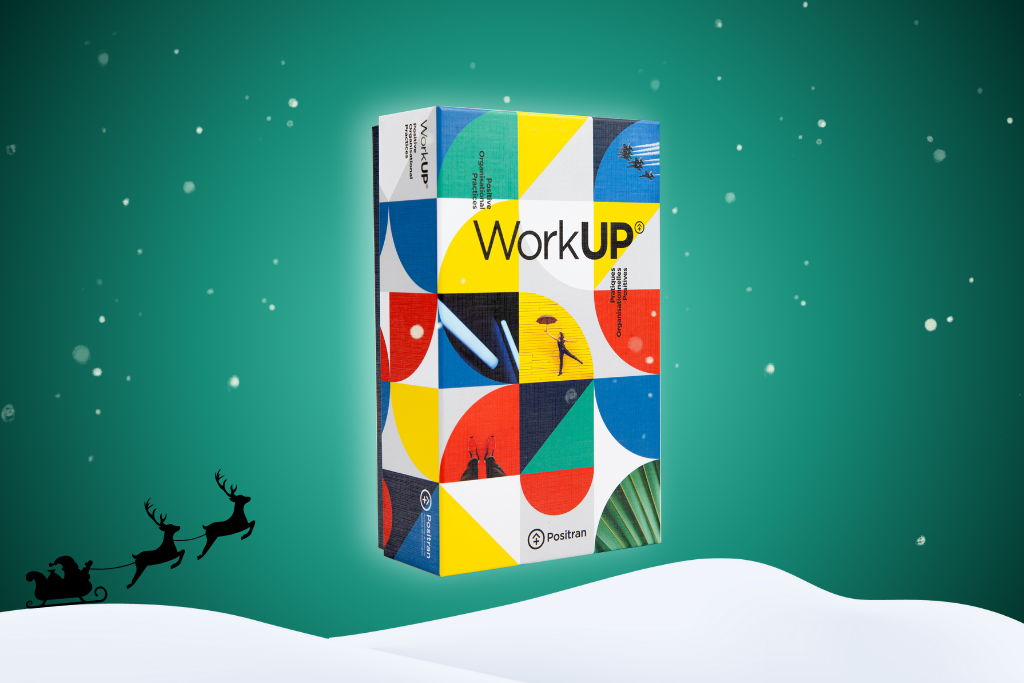
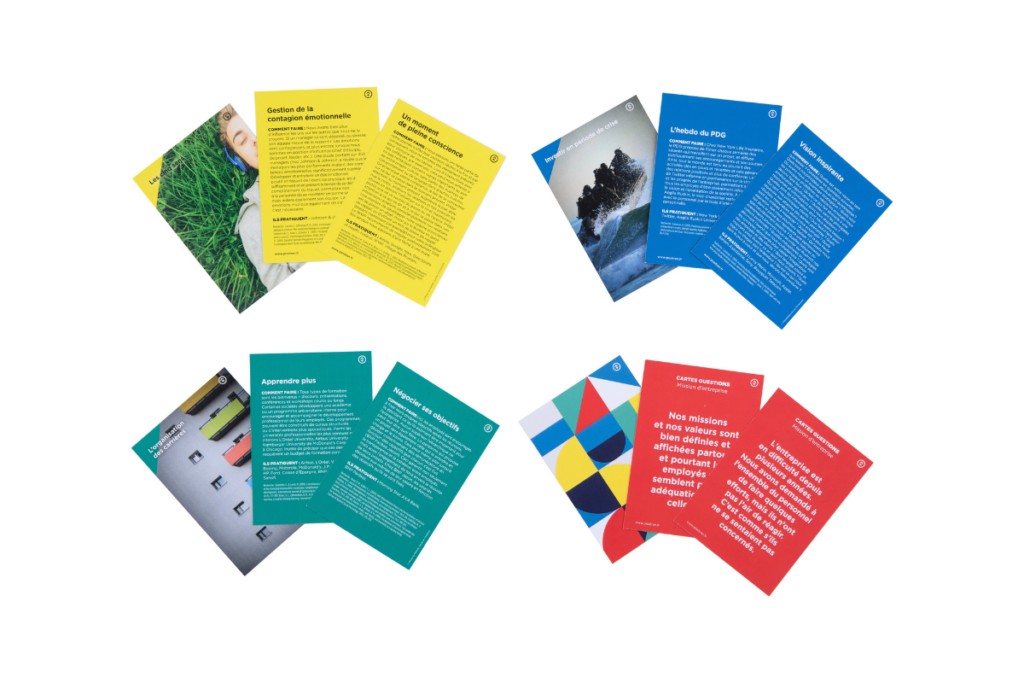
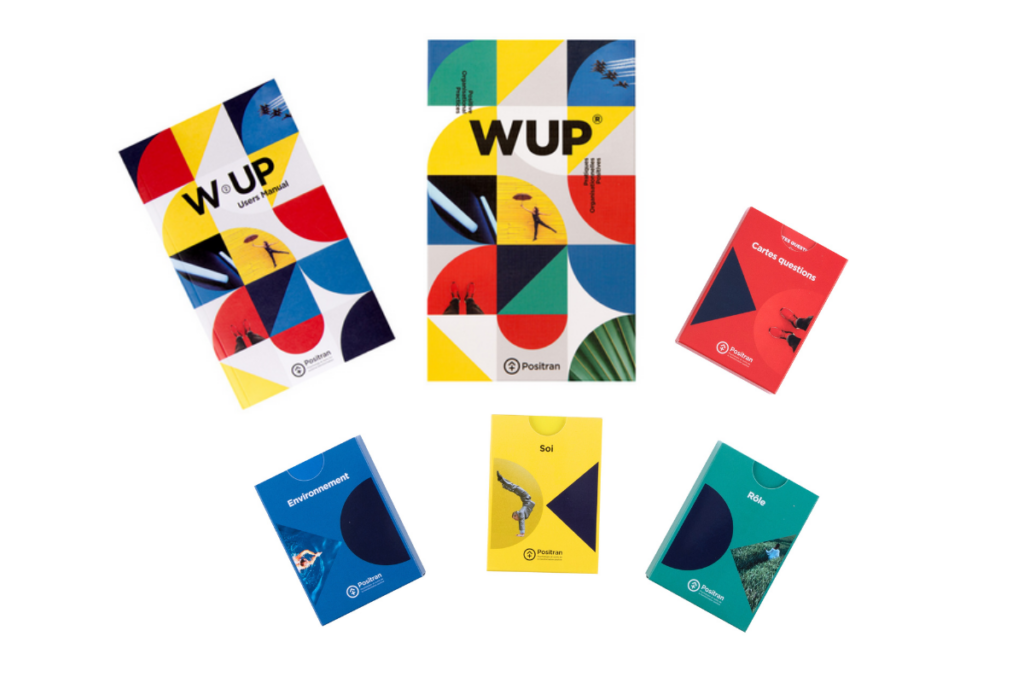

WUP
An indispensable, easy-to-use and fun toolkit, WUP offers concrete strategiesnfor individuals, teams and companies to put into practice every day. Use WUP as a guide and problem solver, a teaching aid, a consulting method or as an interactive game.

WUP
Sale price110,00€
Regular price142,00€
Product Description
Worldwide, the vast majority of employees at all levels of business are not fully engaged in their work. Employee well-being is a concern, with rising rates of stress, absenteeism, and leave. Yet well-being and engagement are fundamental elements of long-term human performance in the workplace, just as, or even more important than, markets, financial fluctuations, and technological transformation. So what can organizations do to foster well-being, engagement, and sustainable performance in the workplace to create meaning at work? And thus build a culture of resilience and innovation to ensure that work is an integral part of growing development?
WUP® is an indispensable, easy-to-use toolkit of practical strategies that individuals, teams, and organizations can easily implement in their daily lives. Based on new and established theories of optimal workplace functioning and informed by research findings and real-life case studies, it offers a wide range of suggestions for improving workplace experiences. You can use the WUP® tool as a problem-solving guide, a book, a set of reminders, a teaching tool, a consultation resource, or an interactive game.
The WUP contains 62 Question Cards (red) that describe common difficult situations encountered at work. This category includes two joker cards that allow you to talk about your own issues.
To address these issues, the WUP® offers 3 types of responses based on the three types of resources of the POP scientific model to develop well-being, commitment and sustainable performance:
62 Green Cards: WORK ROLE RESOURCES which refer to the essential characteristics of one's job to meet the basic psychological needs leading to a positive work experience. They are divided into six subcategories: autonomy, mastery, diversity, clarity & structure, relationships and meaning at work.
62 Blue Cards: ENVIRONMENTAL RESOURCES , which are the broad-based characteristics of the work environment that contribute to a positive workplace culture. They are divided into six subcategories: salaries & benefits, trust, management, leadership, working conditions, and corporate mission.
62 Yellow Cards: PERSONAL RESOURCES or SELF , which refer to the unique strengths, positive attributes, and potential of the individual employee that affect their functioning at work and can be developed in the workplace. They are divided into six subcategories: vitality, positive mindset, cognitive flexibility, emotional agility, time management, and meaning in life.
Who is it for?
WUP® is a professional facilitation tool to strengthen well-being, engagement and sustainable performance.
WUP® is a treasure trove for any coach, occupational psychologist or consultant.
It can also be useful to all managers to improve their own positive functioning and that of their team in the workplace.
Its use
We present some examples of exercises to use WUP® to develop well-being, engagement and sustainable performance.
Exercise: Call for tenders
This is a fun, interactive exercise that is always done in a group of five to ten people. If your group is larger, we recommend dividing it into smaller groups. In this case, several WUP® games are required.
One person in the group is the client, who is facing various difficulties in his business and would like to find a consultant to help him. The other people are consultants who are trying to convince him to sign the contract.
The objective of the game for consultants is to collect as many question cards as possible from the client.
All resource cards are shuffled and dealt among the consultants, seven cards per person. The remaining cards are placed face down on the table, forming a pile. All question cards are also placed on the table in a separate pile, face down.
The customer begins the game by drawing the top card from the question pile. If the customer does not like the card they drew, they can put it back and choose another one instead. Only one additional card is allowed per round.
Once the client has taken their card, they present their problem to the consultants. They can do this by sticking to the description on the card or adding additional details to contextualize the problem. The red joker card allows the client to formulate their own problem.
The auction begins. Each consultant selects the best possible solution from the resource cards available and tries to "sell" it to the client, pleading their case.
The green, blue, and yellow joker cards allow consultants to propose their own solutions. After listening to all possible solutions, the client selects their preferred one by handing their question card to the chosen consultant.
Each consultant discards the resource card used for that round and draws a new card from the resource pile. The client takes a new question card from the pile, and the process repeats. Play can continue for five to seven rounds, or until a consultant acquires three question cards (and thus three contracts). That person is the winner.
A variation of this game is to change the client every round. In this case, all players start with seven resource cards, although these cannot be used as a solution for the person taking on the role of the client (i.e., the client cannot choose themselves as a consultant).
Another variation is to encourage the client to provide feedback on all proposals, in addition to choosing the winner. Feedback on the client's thoughts on the proposals doesn't need to be long (one or two sentences) and works best in a small group.
As the game progresses, solutions tend to become more and more creative, drawing inspiration from the resource cards, but often going further than what the card suggests.
WUP® Training
This is a structured and thoughtful exercise that can be done in groups or alone. It requires a good understanding of your organization's current situation and a good knowledge of the resource card subcategories. You do not need to use the question cards for this exercise.
You cannot adapt and refine your workplace interventions if you don't know what's working and what's not working in your business and what its strengths and weaknesses are.
First, read the descriptions of each resource card category (pages 18, 25, and 32). Guided by the descriptions of these (see section 4), assess which resources are well-developed and which ones require more attention. You can give a score from 1 to 10 to simplify your conclusions.
Based on your diagnosis, select the resource subcategories you want to work on (either from a development or improvement perspective) and review the suggested practices. Sort the relevant practices into three piles:
• Not appropriate or relevant;
• Already implemented;
• Could be implemented
Discard the first pile "Not appropriate or irrelevant" and examine the second in detail (Already implemented). Are these practices working as well as expected? Are they appreciated by employees? Are there any strategies that are no longer effective? If so, should they be replaced with another strategy or adjusted?
Next, go through the “Could be implemented” pile and select the strategies that you find particularly relevant and appropriate for your organization. How would you go about implementing them? Are there any changes or adjustments that need to be made to ensure successful implementation? Do these practices make you think of other strategies you would like to try?
Finish by writing an action plan that you are excited about and can't wait to implement.
Exercise: My best possible organization
This exercise is best done alone, with a coach, or with a very small group of people who know each other well. It is not necessary to use question cards for this exercise.
Spread your hands in front of you and imagine the following scenario: In one hand, you hold your organization as it is now, and in the other, you hold your organization as you would like it to be—the best possible version. What are the differences between these two visions? What are the relationships between people? What new structures are in place, and what old ones have disappeared? What is the work culture like in your company, and what sets it apart? Note down some key themes and concepts that illustrate these differences. These are the building blocks of your vision.
Now, browse through the 18 resources (see section 4) and see if any of them match the important themes that presented themselves to you and can therefore help you achieve your best organizational vision. Feel free to review only the resources that directly connect you to your vision. Select the relevant categories and read them, setting aside those that do not pique your interest.
As you review the most interesting practices, select five to ten that you think would most help you achieve your vision. You could use them as is or modify them slightly to better suit your situation. It's important to be both creative and pragmatic—you should be able to implement these practices without asking permission, and you should be enthusiastic about doing them. When will you start?
Exercise: Problems
The Problem Session is a short, focused activity that allows a team member to share a current problem or challenge with the team and elicit a set of ideas, solutions, feedback, and reflections from the entire group. It allows one person to present a challenge and for others to understand it, then generate an unlimited number of ideas for the individual to consider.
Using question cards or a question joker, the problem owner shares it with the group, and the group helps them define the category, or preferably, categories, to which the problem belongs. The group then selects all the practices (about 20 to 40 cards) that fit into those categories and places them on the table.
The cards will serve as a support for generating ideas. They can provide momentum that the group can then build on. The goal is to leave with at least five feasible ideas that the problem owner commits to implementing
Worldwide, the vast majority of employees at all levels of business are not fully engaged in their work. Employee well-being is a concern, with rising rates of stress, absenteeism, and leave. Yet well-being and engagement are fundamental elements of long-term human performance in the workplace, just as, or even more important than, markets, financial fluctuations, and technological transformation. So what can organizations do to foster well-being, engagement, and sustainable performance in the workplace to create meaning at work? And thus build a culture of resilience and innovation to ensure that work is an integral part of growing development?
WUP® is an indispensable, easy-to-use toolkit of practical strategies that individuals, teams, and organizations can easily implement in their daily lives. Based on new and established theories of optimal workplace functioning and informed by research findings and real-life case studies, it offers a wide range of suggestions for improving workplace experiences. You can use the WUP® tool as a problem-solving guide, a book, a set of reminders, a teaching tool, a consultation resource, or an interactive game.
The WUP contains 62 Question Cards (red) that describe common difficult situations encountered at work. This category includes two joker cards that allow you to talk about your own issues.
To address these issues, the WUP® offers 3 types of responses based on the three types of resources of the POP scientific model to develop well-being, commitment and sustainable performance:
62 Green Cards: WORK ROLE RESOURCES which refer to the essential characteristics of one's job to meet the basic psychological needs leading to a positive work experience. They are divided into six subcategories: autonomy, mastery, diversity, clarity & structure, relationships and meaning at work.
62 Blue Cards: ENVIRONMENTAL RESOURCES , which are the broad-based characteristics of the work environment that contribute to a positive workplace culture. They are divided into six subcategories: salaries & benefits, trust, management, leadership, working conditions, and corporate mission.
62 Yellow Cards: PERSONAL RESOURCES or SELF , which refer to the unique strengths, positive attributes, and potential of the individual employee that affect their functioning at work and can be developed in the workplace. They are divided into six subcategories: vitality, positive mindset, cognitive flexibility, emotional agility, time management, and meaning in life.
WUP® is a professional facilitation tool to strengthen well-being, engagement and sustainable performance.
WUP® is a treasure trove for any coach, occupational psychologist or consultant.
It can also be useful to all managers to improve their own positive functioning and that of their team in the workplace.
We present some examples of exercises to use WUP® to develop well-being, engagement and sustainable performance.
Exercise: Call for tenders
This is a fun, interactive exercise that is always done in a group of five to ten people. If your group is larger, we recommend dividing it into smaller groups. In this case, several WUP® games are required.
One person in the group is the client, who is facing various difficulties in his business and would like to find a consultant to help him. The other people are consultants who are trying to convince him to sign the contract.
The objective of the game for consultants is to collect as many question cards as possible from the client.
All resource cards are shuffled and dealt among the consultants, seven cards per person. The remaining cards are placed face down on the table, forming a pile. All question cards are also placed on the table in a separate pile, face down.
The customer begins the game by drawing the top card from the question pile. If the customer does not like the card they drew, they can put it back and choose another one instead. Only one additional card is allowed per round.
Once the client has taken their card, they present their problem to the consultants. They can do this by sticking to the description on the card or adding additional details to contextualize the problem. The red joker card allows the client to formulate their own problem.
The auction begins. Each consultant selects the best possible solution from the resource cards available and tries to "sell" it to the client, pleading their case.
The green, blue, and yellow joker cards allow consultants to propose their own solutions. After listening to all possible solutions, the client selects their preferred one by handing their question card to the chosen consultant.
Each consultant discards the resource card used for that round and draws a new card from the resource pile. The client takes a new question card from the pile, and the process repeats. Play can continue for five to seven rounds, or until a consultant acquires three question cards (and thus three contracts). That person is the winner.
A variation of this game is to change the client every round. In this case, all players start with seven resource cards, although these cannot be used as a solution for the person taking on the role of the client (i.e., the client cannot choose themselves as a consultant).
Another variation is to encourage the client to provide feedback on all proposals, in addition to choosing the winner. Feedback on the client's thoughts on the proposals doesn't need to be long (one or two sentences) and works best in a small group.
As the game progresses, solutions tend to become more and more creative, drawing inspiration from the resource cards, but often going further than what the card suggests.
WUP® Training
This is a structured and thoughtful exercise that can be done in groups or alone. It requires a good understanding of your organization's current situation and a good knowledge of the resource card subcategories. You do not need to use the question cards for this exercise.
You cannot adapt and refine your workplace interventions if you don't know what's working and what's not working in your business and what its strengths and weaknesses are.
First, read the descriptions of each resource card category (pages 18, 25, and 32). Guided by the descriptions of these (see section 4), assess which resources are well-developed and which ones require more attention. You can give a score from 1 to 10 to simplify your conclusions.
Based on your diagnosis, select the resource subcategories you want to work on (either from a development or improvement perspective) and review the suggested practices. Sort the relevant practices into three piles:
• Not appropriate or relevant;
• Already implemented;
• Could be implemented
Discard the first pile "Not appropriate or irrelevant" and examine the second in detail (Already implemented). Are these practices working as well as expected? Are they appreciated by employees? Are there any strategies that are no longer effective? If so, should they be replaced with another strategy or adjusted?
Next, go through the “Could be implemented” pile and select the strategies that you find particularly relevant and appropriate for your organization. How would you go about implementing them? Are there any changes or adjustments that need to be made to ensure successful implementation? Do these practices make you think of other strategies you would like to try?
Finish by writing an action plan that you are excited about and can't wait to implement.
Exercise: My best possible organization
This exercise is best done alone, with a coach, or with a very small group of people who know each other well. It is not necessary to use question cards for this exercise.
Spread your hands in front of you and imagine the following scenario: In one hand, you hold your organization as it is now, and in the other, you hold your organization as you would like it to be—the best possible version. What are the differences between these two visions? What are the relationships between people? What new structures are in place, and what old ones have disappeared? What is the work culture like in your company, and what sets it apart? Note down some key themes and concepts that illustrate these differences. These are the building blocks of your vision.
Now, browse through the 18 resources (see section 4) and see if any of them match the important themes that presented themselves to you and can therefore help you achieve your best organizational vision. Feel free to review only the resources that directly connect you to your vision. Select the relevant categories and read them, setting aside those that do not pique your interest.
As you review the most interesting practices, select five to ten that you think would most help you achieve your vision. You could use them as is or modify them slightly to better suit your situation. It's important to be both creative and pragmatic—you should be able to implement these practices without asking permission, and you should be enthusiastic about doing them. When will you start?
Exercise: Problems
The Problem Session is a short, focused activity that allows a team member to share a current problem or challenge with the team and elicit a set of ideas, solutions, feedback, and reflections from the entire group. It allows one person to present a challenge and for others to understand it, then generate an unlimited number of ideas for the individual to consider.
Using question cards or a question joker, the problem owner shares it with the group, and the group helps them define the category, or preferably, categories, to which the problem belongs. The group then selects all the practices (about 20 to 40 cards) that fit into those categories and places them on the table.
The cards will serve as a support for generating ideas. They can provide momentum that the group can then build on. The goal is to leave with at least five feasible ideas that the problem owner commits to implementing
